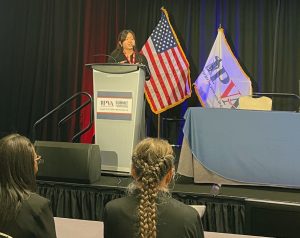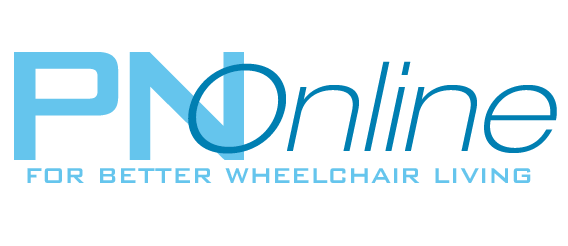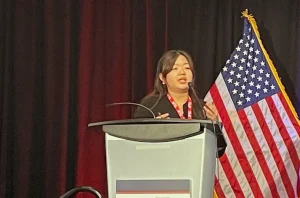Program helps wheelchair and scooter users gain confidence
Fires can be devastating. But some tragedies can be mitigated if people plan ahead. For people who use wheelchairs or scooters for mobility, preparation is even more critical.
“The research has shown that people with physical disabilities have two to four times higher dying rates in a fire incident compared to the general population,” says Ziwei Li, MSOT, a PhD candidate at the University of Illinois Urbana-Champaign. “This is because people with physical disabilities have a lot of difficulties navigating through the fire incidents because the evacuation during the fire events often comes with climbing or climbing over objects, navigating the stairs or crawling, which are very difficult for them. So, this is a very huge need for us to really educate them what you should do during fire incidents.”

To help, Li and colleagues, including principal investigator Laura Rice, PhD, MPT, ATP, designed and tested a program called Fire Readiness for Wheelchair Users (FEW). Li presented the team’s findings Aug. 25 during the first day of the Paralyzed Veterans of America Healthcare Summit + Expo in New Orleans.
Li says in 2022, the researchers conducted a scoping review and focus group that found a lack of knowledge in terms of disaster preparation and management among people with disabilities. While 80% of people in the focus group said they felt confident about their ability to evacuate, only 60% had some sort of plan in place. When asked details about the plan, such as who was in their support network or what they’d do in the aftermath of a fire, those participants didn’t know. Meanwhile, the scoping review revealed that early detection devices such as sprinkler systems and fire alarms made a big difference in detecting and preventing fires.
With information gathered from the scoping review and focus group, the researchers developed an online, evidence-based education program, which can be accessed at https://publish.illinois.edu/few-craig-h-neilson-foundation/general-information. The FEW program consists of modules and a booklet.
To assess the program’s impact, the researchers enrolled 42 participants with multiple sclerosis, spinal cord injury, cerebral palsy or spinal muscular atrophy. They participated in a six-week hybrid program, which ended in May, viewing online educational videos and completing preparedness activities in an accompanying booklet.
Modules go over information such as fire prevention equipment you can install at home, fire alarms, sprinkler systems and the different classes of fire extinguishers, home safety tips and devices, how to design an evacuation plan and life after a fire, as well as how to gather a social support network, find local resources and talk to family members, friends and even the local fire department to advocate for yourself and speak of your needs.
“Some firefighters mention people who use wheelchairs and scooters can actually contact them with the non-emergency number and have your information recorded in the fire department,” Li says. “For example, if you have a [service animal] you need to be rescued with you at the same time of evacuation. You can also document that in the fire department, as well.”
Participants then met weekly as a group in a video chat for 30- to 60-minute discussions that included a therapist and trained firefighter. The discussion emphasized active participation and gave people a chance to ask questions and learn information they could implement in their fire readiness plans.
Following the six weeks, participants were given a questionnaire to evaluate how much they learned and their program perceptions.
The researchers found significant results from the study.
“The interview data, the qualitative piece, really revealed that after receiving the education program, they feel much more confident and they feel less stressed when they talk about the fire incidents,” Li says. “They will be able to navigate out of their residence safely and give detailed and concise guidance to the rescue personnel.”
Li says the team’s goal is to deliver the education to all people with physical disabilities in different settings, including nursing homes, assisted living facilities, acute care hospitals and school systems, as well as fire departments to disseminate to local communities. Participants’ feedback will be incorporated in future fire education programs.
“It promotes their confidence level and helps them to be involved more in the communities, and they really like being able to talk to the local fire department and talk to their peers. It increases their quality of life,” Li says.

